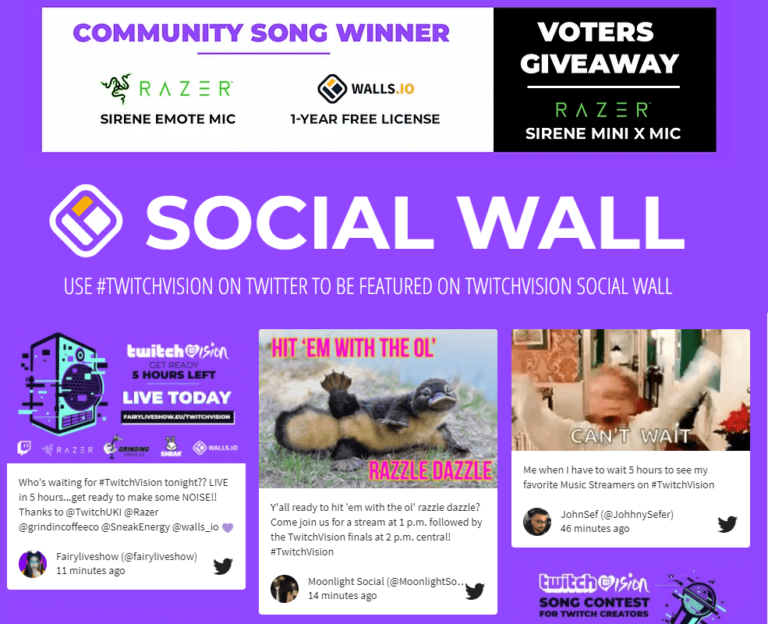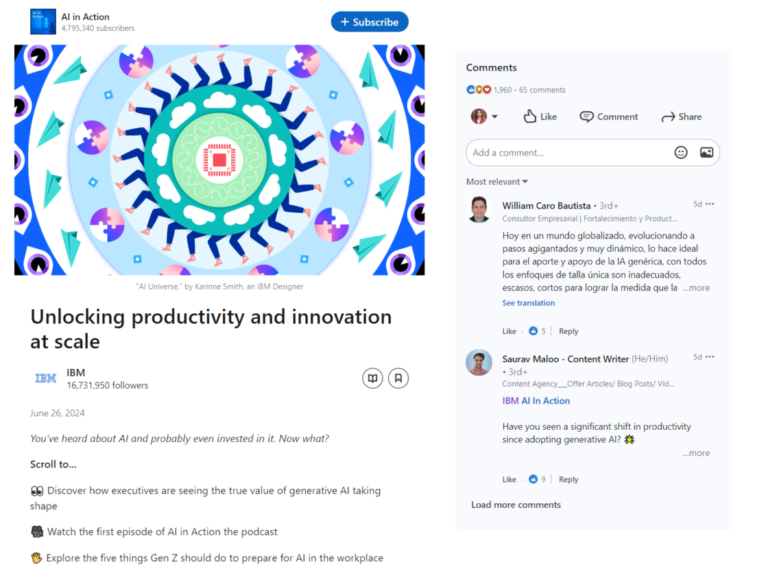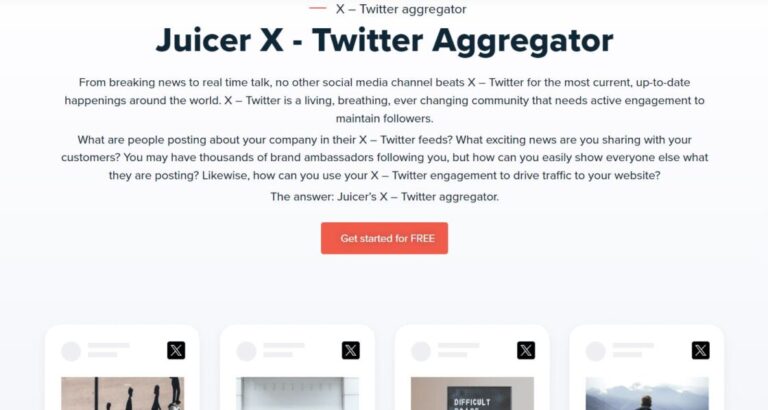
Just because you posted content on social media doesn’t mean a ton of people will see and engage with it. To get people’s attention, you must craft high-quality content and employ the right B2B social media distribution tactics to get on the right audience’s radar, win their trust, and drive organic engagement.
In this article, we’ll show you six strategies for distributing your content on social media to drive the right results.
1. Embed a Social Media Wall on Your Website
A social media wall displays content from social channels on your website in real-time.
For example, you can add a Twitter (X) feed to your website to display your content on a custom tweet wall. It’s a great way to drive direct social engagement from website visitors — putting your content in front of people who wouldn’t have easily discovered it on the social platform.
To create a beautiful social feed, you need a social media aggregator like Juicer.io. Juicer automatically pulls and displays content from 16+ social channels, including Facebook, Instagram, and TikTok. It’s easy to use, and you can customize the feed to match your brand colors.
Carefully select the placement of your social media walls on your website to maximize their potential. Consider high-traffic areas like the homepage, footer, or a dedicated “What’s New” section.
Ensure the design and style of your social wall match your website’s overall look and feel for a seamless user experience. Last but not least, strategically use calls to action within your social feed, encouraging visitors to follow your social media profiles or engage with specific campaigns.
2. Share Social Content in Communities
Dive deeper than the usual social media giants and uncover micro-communities on platforms like Slack, Discord, or specialized forums. These hubs are goldmines of highly engaged professionals passionate about specific topics.
The goal is to become a trusted member of these communities, not just an annoying content broadcaster. Answer questions, share insights, and participate in activities. Then, when you publish a new piece of social content that the community might find valuable, you share a link with them.
3. Leverage Employee Advocacy
Posts get 800% more engagement when shared on the employee’s personal social media account than official brand pages. Turning your team into brand champions through employee advocacy is a powerful way to amplify your brand’s reach with a touch of authenticity that’s hard to replicate through corporate channels alone.
Create guidelines and workshops that help employees understand the best practices for social sharing, emphasizing the importance of adding personal narratives to their shared content.
Offer templates and examples to inspire them but encourage customization to reflect their voice. Recognize and reward top brand champions to motivate them and encourage continued participation.
Learn more: How to use LinkedIn for employer branding
4. Monitor Trends With Social Listening Tools
Social listening tools like Brandwatch and Syften help you track what people say about your brand online. You’ll use this data to discover conversations you can participate in to build brand awareness and improve your social media strategy.
For example, let’s say you discover that people are asking questions about your pricing plans. In that case, you can create a social post explaining how your pricing packages work and the best options for customer segments.
5. Use Messaging Apps For Personalized Distribution
Have you ever thought about using messaging apps (wisely!) for content distribution? No unsolicited, spam, or generic messages to ‘’stay top of mind’’.
The goal is to share valuable content through channels where your audience has willingly opted in, signaling they’re eager to hear from you. LinkedIn and Facebook groups come to mind here.
Start with an opt-in strategy. Make it clear and easy for your audience to choose to receive updates from you via their preferred messaging apps. Whether through a sign-up form on your website, during a webinar, or at the end of a successful sales call, give them the option to join specific groups or lists that match their interests.
Once they’ve opted in, organize your audience into segments. This could be based on their industry, role, or even the type of content they enjoy most. Now, tailor your content to these groups to deliver personalized value.
Always keep the door open for feedback and opt-outs, too. Make it easy for subscribers to adjust their preferences or leave. This respectful approach ensures compliance with privacy laws and strengthens trust in your brand.
6. Develop a Content-Sharing Circle
Create a network of B2B marketers and businesses within your industry willing to share each other’s content. This collective content distribution effort can drastically extend each content’s reach. Everyone wins.
Identify and vet potential partners who align with your industry focus and content standards. Once your group is formed, set up regular virtual meetups via video calls to discuss content strategies, explore cross-promotion opportunities, and share insights on audience engagement trends.
Use these sessions to deepen the collaboration and find innovative ways to support each other’s content goals. Implement a shared content calendar to plan and track mutual promotions, making sure to diversify the types of content shared and evenly distribute the visibility benefits among all members.
Final Words: Don’t Post and Ghost
Remember, social media isn’t a one-way street. If you want to push your content far and wide there, you must engage with the platform as a whole — instead of posting and disappearing until the next time you have something to say. That’s pretty toxic.
Set aside time each day to review comments on your posts. Respond with honest, thoughtful, and kind words rather than a quick emoji or generic response. That way, you can create an authentic brand that builds genuine connections with your target audience.
Enjoyed reading this? Check out other social media tips on the Juicer blog to grow your brand.





